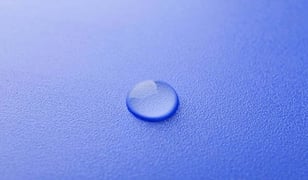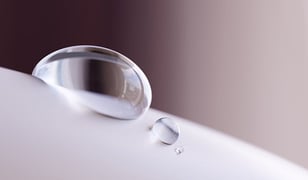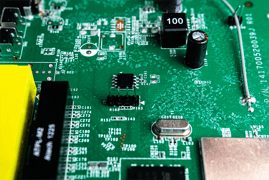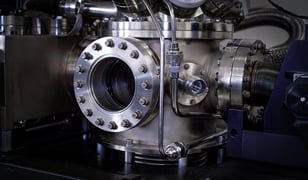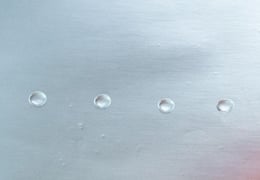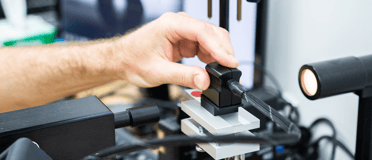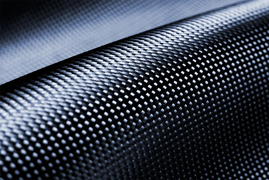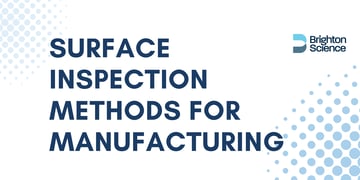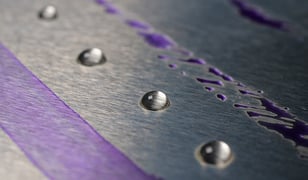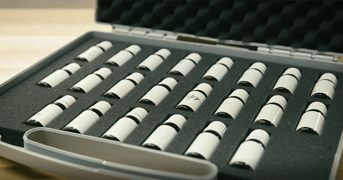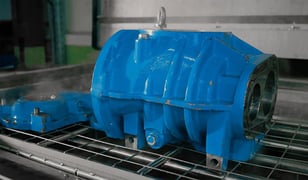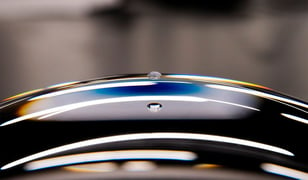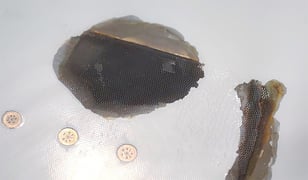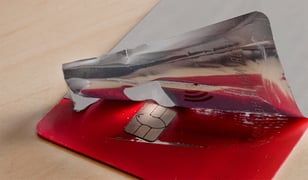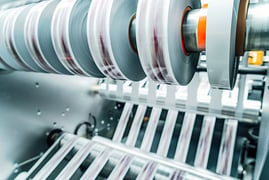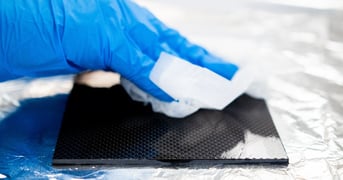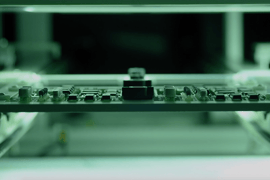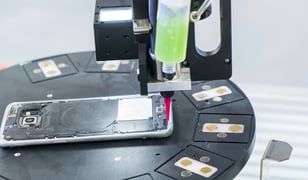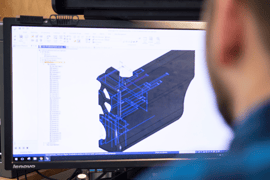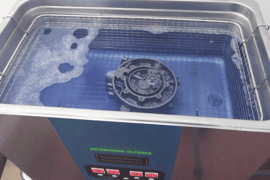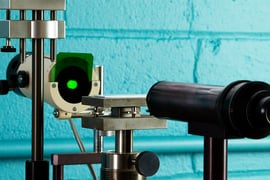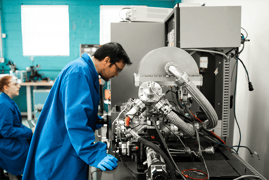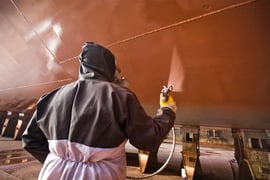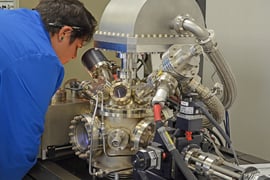3 Things You Need to Control for Proper Adhesion
The “What,” “Way,” and “The Surface” Behind Reliable Surface Bonding In manufacturing environments where bonding, coating, printing, or sealing takes place, success is never accidental. Whether you’re assembling automotive interiors, medical devices, electronics, or aerospace composites, adhesion...
Read
Topics:
Posts by Topic
The Cost of Poor Quality in Manufacturing and How Brighton Science Helps Stop It Before It Starts
In today’s fast-paced manufacturing environment, quality issues are more than just operational setbacks; they’re financial liabilities. The Cost of Poor Quality (COPQ) refers to the total financial burden a company incurs due to substandard products, inefficient processes, or rework.At Brighton...
Read
Topics:
What is the Difference Between Surface Free Energy and Surface Energy?
Key Takeaways Surface free energy and surface energy are interchangeable terms in manufacturing contexts; both describe the energy available at a material’s surface to enable interactions such as bonding, coating, printing, and cleaning. Surface energy has two components, dispersive and polar....
Read
Topics:
What is the Difference Between Surface Tension and Surface Energy
Key Takeaways: Surface tension describes the attractive forces between molecules at the surface of a liquid, while surface energy describes the same phenomenon at the surface of a solid. Both are expressions of intermolecular attraction, which determines whether two materials will adhere...
Read
Topics:
Silicone Contamination: The Problem You Don’t Know You Have
Most engineers expect failures to trace back to obvious causes, a material defect, an operator mistake, or a process error. But sometimes the culprit is hiding in plain sight: silicone contamination.
Read
Topics:
From Innovation to Standard: How Water Contact Angle Became the Surface Readiness Benchmark
A Common Language for an Uncommon Challenge One of the biggest barriers in global manufacturing is the lack of a shared language for surface quality. Engineering, operations, and suppliers often rely on guesswork or legacy tests.
Read
Topics:
Ensuring Conformal Coating Reliability with Surface Intelligence
The Crucial Role of Conformal Coatings in Electronics Electronic components are the backbone of modern technology, from implantable medical devices and navigational equipment to sensor packages in cars and everyday cell phones. These delicate and exposed pieces are vulnerable to various...
Read
Topics:
The Hidden Factor in Product Performance: Why the Top Few Molecular Levels of a Surface are Critical to Product Reliability
Manufactured and assembled products almost always require adhesion or cleaning steps—whether bonding, coating, painting, or printing—which makes the quality of those surfaces essential to the product's final performance. Contrary to conventional assumptions, surfaces are highly variable and...
Read
Topics:
What Automotive Manufacturers Need to Know About Surface Analysis for Polymer Bonding and Coating
Polymers have taken center stage in automotive manufacturing. Their light weight, durability, and versatility make them ideal for many applications ranging from dashboards and door panels to bumper facias and fenders. However, as any product development or quality control professional will tell...
Read
Topics:
Comprehensive Guide to Understanding X-ray Photoelectron Spectroscopy (XPS) for Surface Analysis
X-ray photoelectron spectroscopy (XPS) is a sensitive surface analysis technique with broad applications across numerous industries. Beyond its fundamental role in materials characterization, XPS can provide critical information to solve real-world material challenges. With the help of Rose...
Read
Topics:
Environmental Silicone: Detection, Control, and Impact on Adhesion in Manufacturing
Silicone contamination is a huge problem in many painting and bonding applications. It’s impossible to see, hard to remove, and it creeps in unseen like a ghost. Where the harm it can cause is recognized, businesses go to great lengths to clean surfaces and exclude potential sources of...
Read
Topics:
Turn Complaints into Customer Satisfaction & Loyalty: Why Surface Chemistry Knowledge Matters
Imagine this: manufacturers and suppliers of cleaning solutions, coatings, adhesives, inks, and more receive countless customer calls daily. The common thread? Disappointment. Customers report their products aren't performing as expected – the paint isn't adhering, the adhesive bond is failing, or...
Read
Topics:
Gaining a Competitive Edge: The Power of Surface Analysis with Brighton Science
Every manufacturer that bonds, coats, paints, seals, or cleans needs objective surface measurement technology. It's the key to compressing lead times, reducing waste, and improving product consistency. Brighton Science has a versatile suite of solutions for surface analysis based on water contact...
Read
Topics:
Corona Treatment Concerns You Need to Take a Closer Look At
Disclaimer: This article is NOT about COVID-19; it is about a surface treatment process for better surface preparation and adhesion properties in manufacturing. If you're looking for information about cleaning, here's an article that discusses the difference between biological cleanliness and...
Read
Topics:
Contact Angle Goniometer 101: Guide to Measuring Contact Angle
Have you wondered why some paints or coatings adhere effortlessly while others leave blisters or bubbles? The answer lies in wettability, the intricate dance between a liquid and a surface governed by a powerful principle known as contact angle. And measuring this microscopic tango? That's where...
Read
Topics:
Fundamentals of Adhesion Science & Why 3 Molecular Layers Matter
Adhesion is crucial in microscopic and macroscopic worlds, yet it is an often-overlooked force. Adhesion acts as the invisible glue that unites objects, both massive and minute. Adhesion allows us to construct monumental structures like bridges, buildings, and airplanes. It enables us to glue wood...
Read
Topics:
Surface Inspection 101: A Visual Guide to the Surface Analyst, Water Break Tests, and Dyne Ink
In the manufacturing industry, it is crucial to meet certain surface preparation requirements in order to ensure the safety and reliability of products. Various tests have been developed to determine if these requirements are being met and if the cleaning process has been effective enough to...
Read
Topics:
Demystifying Dyne Levels: Understanding and Measuring Surface Quality
The evaluation of material surfaces in terms of quality has long relied on dyne testing. Despite their drawbacks, such as subjectivity, imprecision, damage to surfaces, and safety risks for users, dyne tests have remained popular among manufacturers due to their wide availability and affordability....
Read
Topics:
Non-Destructive Alternative to Dyne Testing for Reliable Quality Control
Dyne solutions have been the most common method of quality-checking material surface cleanliness for decades. Their ubiquity and low cost have led them to be heavily relied upon by manufacturers even though they are imprecise, destructive to surfaces, and harmful to the user. The science behind...
Read
Topics:
The Best Way to Qualify a Wash Method for Your Manufacturing Process
Parts washers are heavy-duty, hardworking machines that have become irreplaceable staples in automotive andmachined part manufacturing processes. As manufacturing processes have become more sophisticated, the industries using parts washers have expanded to includenot only industrial metals and...
Read
Topics:
How to Measure Contact Angle on Convex and Concave Surfaces
Historically, accurately measuring contact angles on concave and convex surfaces has been a challenge. The typical method used to measure contact angle on these types of surfaces has been with abenchtop goniometer. The challenges arise from how goniometers measurecontact angle—from a horizontal...
Read
Topics:
The Solution to Costly Aircraft Paint Adhesion Failure
The importance of understanding surface quality and being able to measure it in an accurate, reliable, and demonstrable way is important for ensuring a high-quality finish and, ultimately, a high-quality product. Any manufacturer that is not able to do this increases their risk of producing...
Read
Topics:
Meet Brighton Science's Chief Scientist, Giles Dillingham
A Deep History in Materials Science Founder and Chief Scientist of Brighton Science, Dr. Giles Dillingham's fascination with the connections between the invisible (the molecular structure of the world around us) and the perceivable (the properties and behavior of materials and objects) stems from a...
Read
Topics:
How Shoe Manufacturers Maintain Adhesion Quality Through Material Changes
There are many reasons why sneakerheads love the shoes they covet. Athletic shoes have become one of the most sought-after clothing items due to their aesthetic appeal and shoe manufacturers' ever-evolving material innovations.
Read
Topics:
Better Consumer Electronics Reliability: Coatings and Adhesives
In a recent study conducted by Instrumental, the top ten most common manufacturing defects were examined. The number one defect that manufacturers fight against is a deficiency in glue.
Read
Topics:
Process Control Innovations for Card Manufacturers
We've all been there: the frustrating moment at checkout when your card decides to play dead, leaving you scrambling for another way to pay for that mountain of nachos. For credit and debit card manufacturers, these glitches are the ultimate nightmare.Sure, factors like rewards programs and bank...
Read
Topics:
Using Data to Improve Ink Adhesion to Polymer Film
One of the most frustrating aspects of experiencing a problem in manufacturing isn't necessarily the issue itself, but rather, it's the difficulty of accurately determining and communicating what the problem actually is.
Read
Topics:
How to Control Additive Blooming in Polymer Films
We all take the ease of peeling open and resealing packs of double-stuff Oreos for granted. The plastic packaging that maintains the freshness of our favorite snacks and foods has become so ubiquitous it doesn’t even register as existing until we try to open that hotdog pack with our bare hands or...
Read
Topics:
Cleaning Strategies for Great Adhesion
Cleanliness in manufacturing gains avid devotees all the time. Once the importance of cleanliness is grasped, it’s nearly impossible to think about manufacturing processes without considering the pervasive impact cleanliness has on every aspect and feature of the process.
Read
Topics:
Why Surface Cleanliness is Crucial for Electronic PCBs
Defining “clean” is actually more complicated than it sounds. Cleanliness can be in the eye of the beholder (I mean, we all had a college roommate who swore they were tidy, but let’s be honest…), and it can also be calculated and precisely managed to the nth degree. In regard to PCB cleanliness for
Read
Topics:
Is Roughness as Important as Surface Cleanliness to Adhesion?
When manufacturing engineers discuss material surfaces, they usually focus on their physical attributes, such as surface topography or morphology or, more simply, surface roughness. Preparing material surfaces for assembly, coating, painting, or adhesive bonding typically includes steps that...
Read
Topics:
The 3 Crucial Elements for High-Performance Adhesion in Manufacturing
Excellent adhesion relies on the manufacturer’s ability to understand and control three distinct yet interrelated elements. In manufacturing, adhesive bonding takes many forms, but the fundamental principles of adhesion are always the same. Even if the application is metal joint welding, Parylene...
Read
Topics:
Best-practice Surface Preparation Processes for New Products
New Product Development is an essential component to the successful growth of companies that always challenge themselves to improve and innovate. Getting this design stage right is pivotal in that it sets in motion everything the product will be and how well it will perform.
Read
Topics:
How to Ensure a Manufacturing Surface is Clean Enough for Adhesion
Cleanliness and adhesion go hand-in-hand. If you’re looking for an adhesion process to be successful, you are also absolutely interested in cleaning the materials involved in the application. To get the most out of your cleaning operations, it’s imperative to know three things: What does clean...
Read
Topics:
How Surface Quality Devices Can Validate Adhesion Specs
Regulatory specifications in manufacturing exist to ensure that the highest quality, safest, and most useful products are created. These are devised internally through research and development testing to meet customer demands and through external regulatory bodies to protect consumers and public...
Read
Topics:
Can a Surface Science Lab Ensure Adhesion in Manufacturing?
Manufacturers utilize research and design laboratories all the time. To scale new products up to the production line, years of toiling in testing labs are done to ensure that everything goes off without a hitch once production starts.
Read
Topics:
Deck the Hulls: Preparing Ship Hulls for Coating and Painting
Manufacturing a product to withstand the environmental stresses of wind, rain, and sediment is challenging enough. But, when you add saltwater and wave action to the mix, the detrimental threat of corrosion increases significantly. A coating adhesion test is important for quickly testing a surface...
Read
Topics:
Inside Brighton Science's Lab: Advanced Materials and Process Experts
Brighton Science Lab Capabilities The history of Brighton Science (formerly BTG Labs) is rooted in adhesion research. Originally a development lab, Brighton Science specialized in plasma polymerized coatings. The engineers worked with coatings containing corrosion-resistant and anti-microbial...
Read
Topics:


.png?width=644&height=362&name=adhesion-failure%20(2).png)
.png?width=372&height=180&name=Cleaning%20Processes%20(Blog).png)
